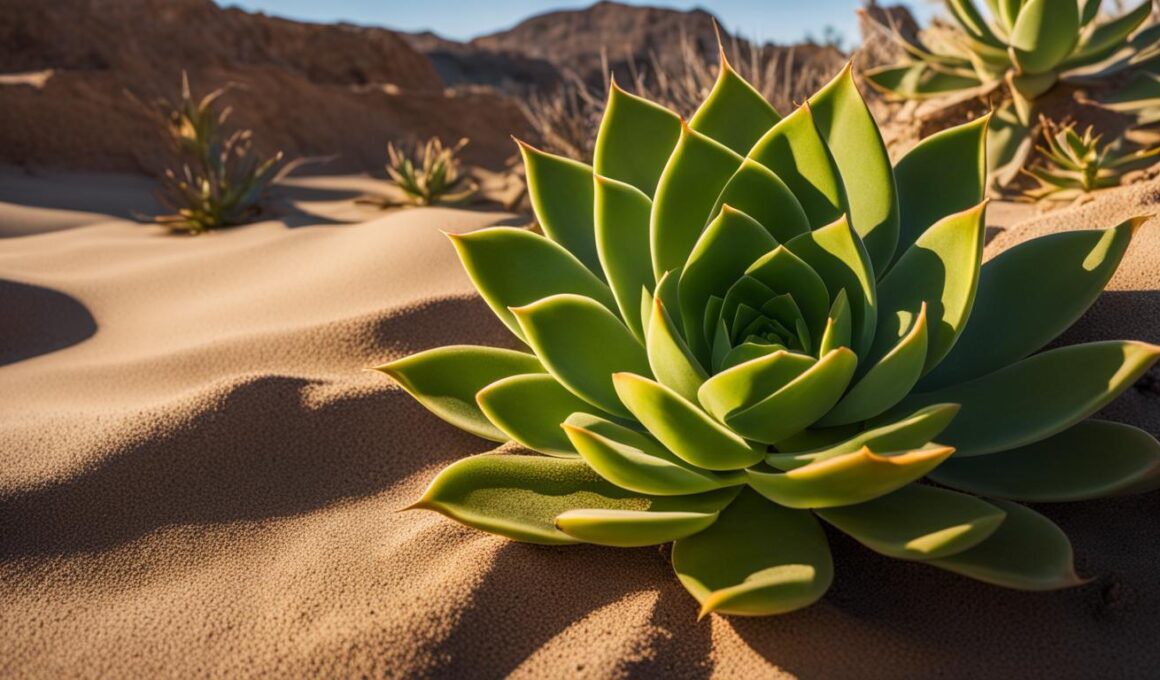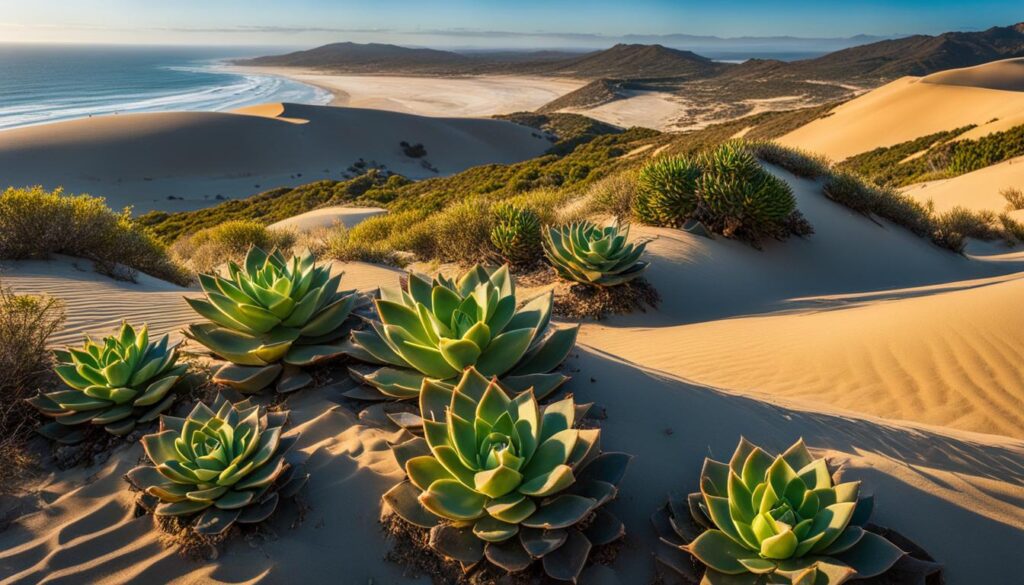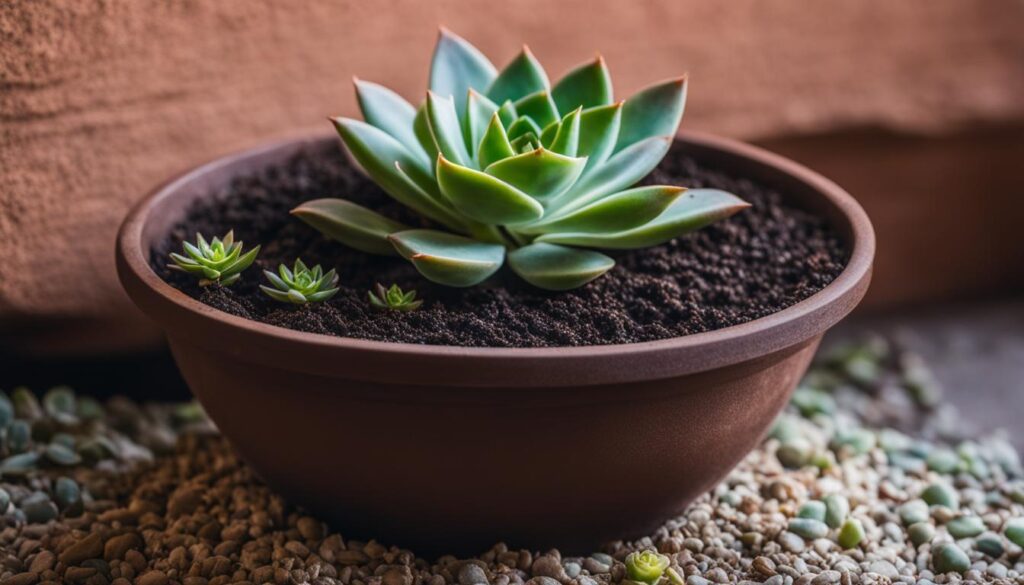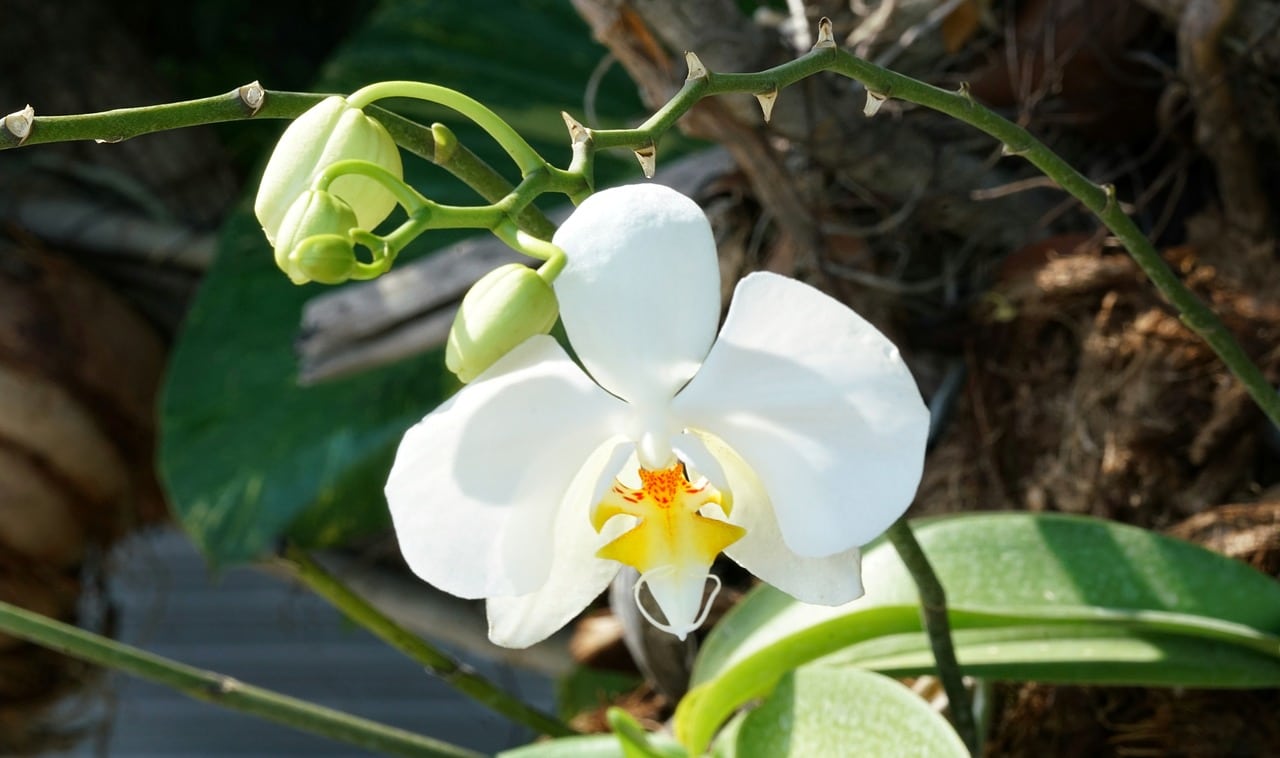Succulents are incredibly hardy plants that have adapted to survive in harsh conditions. One of the most remarkable features of succulents is their ability to live without water for extended periods. While humans can only last about 4 days without water, succulents can go months, seasons, and even a lifetime without needing hydration. This is because succulents have evolved to store water in their leaves, stems, and roots, enabling them to tap into these reserves when necessary.
- Succulents can survive for extended periods without water due to their unique water storage mechanisms.
- Their ability to store water in their leaves, stems, and roots allows them to withstand long periods of drought.
- The specific length of time a succulent can live without water varies based on factors such as environment, size, and dormancy.
- In outdoor hot climates, succulents may require watering every 1-3 weeks.
- Succulents planted indoors or in cool climates generally require less water and can go up to 1-3 months without watering.
Watering Requirements in Outdoor Hot Climates
In outdoor hot climates, succulents have specific watering needs to thrive in the harsh conditions. Due to the combination of direct sunlight, artificial sunlight, fast-draining soil, and breathable pots, the soil tends to dry out quickly, requiring more frequent watering.
The general rule of thumb is to water outdoor succulents in hot climates every 1-3 weeks, depending on the specific conditions and the type of succulent being grown. Factors such as temperature, humidity, wind, and the size of the succulent can all influence the frequency of watering.
It is important to monitor the moisture level of the soil before watering. The top inch of soil should be completely dry before providing water to your succulents. Overwatering can lead to root rot and other issues, so it is crucial to strike the right balance and avoid excessive water.
Watering Schedule for Outdoor Succulents in Hot Climates:
| Succulent Type | Watering Frequency |
|---|---|
| Echeveria | Every 2 weeks |
| Aloe | Every 1 week |
| Haworthia | Every 3 weeks |
| Sedum | Every 2 weeks |
Remember to adjust the watering schedule based on your specific local climate and the needs of your succulents. Observe the signs of hydration in your plants, such as leaves appearing plump or slightly swollen, and adjust the frequency accordingly.
The moist coastal air provides a constant source of moisture for succulents, allowing them to flourish and grow without the need for additional watering. This makes succulents an ideal choice for individuals living in coastal areas who want low-maintenance plants that can withstand the unique climate. The coastal breeze and morning fog contribute to the overall humidity, creating a microclimate that supports the growth and survival of succulents.
It’s important to note that while succulents in coastal beach cities may not require regular watering, they still need well-draining soil to prevent waterlogged roots and other potential issues. Additionally, it’s essential to choose succulent varieties that are well-suited to coastal conditions, as some species may not adapt as well to the coastal environment.
Benefits of Growing Succulents in Coastal Beach Cities
- Succulents in coastal beach cities benefit from the high humidity, reducing the need for regular watering.
- They are well-suited to the coastal climate, with the breeze and morning fog providing an optimal environment for growth.
- Growing succulents in coastal areas adds natural beauty and greenery to the landscape.
- These low-maintenance plants are ideal for individuals seeking hassle-free gardening options.
In conclusion, succulents in coastal beach cities have the advantage of relying on the natural humidity and atmospheric moisture for their hydration needs. They are able to thrive in a unique microclimate created by the coastal breeze and morning fog. This makes succulents an excellent choice for individuals looking to add a touch of greenery to their coastal landscapes without the need for regular watering.
Watering Differences Based on Succulent Size and Maturity
When it comes to watering succulents, the size and maturity of the plant play a significant role in determining its watering needs. Smaller succulents, such as baby plants or offsets, have limited water storage capacity compared to their larger counterparts. As a result, smaller succulents generally require more frequent watering to prevent dehydration.
A general rule of thumb for smaller succulents is to water them every 1-3 weeks, depending on the specific needs of the species. However, it’s essential to observe the plant closely for signs of thirst, such as wilting leaves or a generally shriveled appearance. Adjust the watering frequency accordingly to ensure the succulent gets enough hydration without risking overwatering, which can lead to root rot.
On the other hand, larger and more mature succulents have developed a more extensive water storage system, allowing them to withstand longer periods without watering. These plants can store water in their leaves, stems, and roots, enabling them to survive for 1-6 months between waterings.
| Succulent Size | Watering Frequency |
|---|---|
| Small succulents (baby plants, offsets) | Every 1-3 weeks |
| Larger and mature succulents | Every 1-6 months |
Keep in mind that these watering guidelines are general recommendations, and it’s crucial to consider other factors such as the type of succulent, the environmental conditions, and the time of year. It’s always best to monitor the moisture levels of the soil and the appearance of the succulent to determine its specific watering needs. Remember, finding the right balance of hydration is key to maintaining healthy and thriving succulents.
Watering Requirements during Dormancy and Active Growing Phases
Succulents have distinct watering needs during different phases of their growth cycle, including dormancy and active growing. Understanding these requirements is essential to ensure the health and longevity of your succulents.
During the dormant phase, which occurs when temperatures drop to around 40-50 degrees Fahrenheit, succulents require minimal water. In fact, they often prefer neglect during this time. This is because their growth slows down significantly, and they enter a resting period to conserve energy. Overwatering succulents during dormancy can lead to root rot and other issues, so it is crucial to allow the soil to dry out completely between waterings.
“During the active growing phase, succulents appreciate watering, but only when the soil is completely dry,” explains Dr. Emily Green, a succulent specialist. Active growing typically occurs during the spring and summer months when temperatures are warmer and daylight hours are longer. Succulents require more water during this time to support robust growth and development. However, it is important not to overwater, as this can also lead to root rot. The key is to strike a balance and provide water only when the soil has dried out.
In summary, succulents have different watering requirements during dormancy and active growing phases. During dormancy, they require minimal water and prefer neglect, while during active growing, they appreciate regular watering but only when the soil is completely dry. By understanding and following these watering guidelines, you can help your succulents thrive throughout their growth cycle.
“Remember, overwatering is one of the most common mistakes people make when caring for succulents,” cautions Dr. Green. “It’s important to observe your plants closely and adjust your watering routine based on their individual needs.”
Signs It’s Time to Water Your Succulents
Succulents are resilient plants that have evolved to withstand drought and store water in their leaves, stems, and roots. However, even these hardy plants have their limits and will show signs when they need watering. Understanding these signs is crucial to maintaining the health and longevity of your succulents.
1. Leaf Wrinkling and Drying Out
One of the most common signs that your succulents need water is when their leaves start to wrinkle or dry out. Succulent leaves are normally plump and firm, but when they lack moisture, they begin to shrink and lose their turgidity. This is a clear indication that it’s time to give your succulents a drink.
2. Shedding of Lower Leaves
Another sign that your succulents are in need of water is when they start shedding their lower leaves. As succulents experience water scarcity, they prioritize survival by diverting their limited resources to the newer growth at the top. This results in the lower leaves becoming dry and brittle, eventually falling off. If you notice excessive leaf loss, it’s a sign that your succulents require watering.
3. Flattened Appearance
Succulents store water in their tissues, giving them a plump and rounded appearance. However, when they are deprived of water, they lose their fullness and appear flat. This is a visual cue that your succulents are dehydrated and need to be watered. Keep an eye out for any changes in the overall shape and structure of your succulents.
Remember that every succulent is unique, and the signs of dehydration may vary slightly depending on the species. It’s important to observe your succulents closely and take action when you notice any signs of water stress. By providing the right amount of water at the right time, you can ensure the health and longevity of your succulents.
Conclusion
In conclusion, succulents are remarkably resilient plants that can survive for extended periods without water. Their ability to store water in their leaves, stems, and roots allows them to tap into these reserves when needed, making them well-suited for environments with limited water availability.
Understanding the water requirements of succulents is essential for their long-term survival and health. Factors such as the environment, size, and dormancy play a significant role in determining how often succulents need to be watered. By monitoring signs of hydration needs and providing the right amount of water based on specific conditions, you can ensure the optimal growth and vitality of your succulents.
Remember that succulents cannot bounce back from overwatering, so it is crucial to strike the right balance and avoid under or overwatering. By following these guidelines and paying close attention to the unique requirements of each succulent, you can enjoy the beauty of these fascinating plants while promoting their longevity.
FAQ
How long can succulents live without water?
Succulents can survive for extended periods without water, ranging from months to seasons and even a lifetime. Their ability to store water in their leaves, stems, and roots allows them to tap into these reserves when they need hydration.
How often should I water succulents in outdoor hot climates?
In hot climates, succulents should be watered every 1-3 weeks. The combination of direct sunlight, fast-draining soil, and breathable pots causes the soil to dry out quickly, requiring more regular watering compared to other environments.
How often should I water succulents in indoor or cool climates?
Succulents planted indoors or in cool climates generally require less water. They can go up to 1-3 months without watering due to reduced exposure to elements like wind and direct sunlight. However, it is essential to check the soil moisture before watering indoor succulents.
Do succulents in coastal beach cities need to be physically watered?
In coastal beach cities, particularly in Southern California, succulents may never need to be physically watered. The high humidity in the morning air near the coast can sustain succulents year-round, allowing them to rely solely on atmospheric moisture for hydration.
Do smaller succulents require more frequent watering than larger ones?
Yes, smaller succulents require more frequent watering compared to larger ones. Smaller succulents have limited water storage capacity, while larger ones can store more water in their leaves, stems, and roots. Smaller succulents typically need watering every 1-3 weeks, while larger species can go 1-6 months between waterings.
What are the watering requirements during succulent dormancy and active growing phases?
During dormancy, succulents require minimal water and prefer neglect. In contrast, during active growing phases, succulents appreciate watering but only when the soil is completely dry. It is crucial to understand the specific watering needs of succulents during different stages to avoid overwatering and other issues.
How can I tell when my succulents need watering?
Succulents exhibit several signs when they need watering. These signs include drying out, wrinkling leaves, shedding unnecessary growth, and appearing flat rather than plump. It is important to strike the right balance and avoid under or overwatering, as succulents cannot bounce back from overhydration.
What is the conclusion regarding succulent water requirements?
Succulents are resilient plants that can survive without water for varying periods. Factors such as the environment, size, and dormancy influence their water needs. Monitoring the signs of hydration, providing the right amount of water based on specific conditions, and understanding the unique requirements of each succulent can ensure their long-term survival and health.
Can Overgrown Succulents Survive Without Water?
If you’re wondering whether overgrown succulents can survive without water, you’ll find the answer in a repotting overgrown succulents article. It’s essential to understand the specific needs of your succulents and provide them with the appropriate care to ensure their survival.











